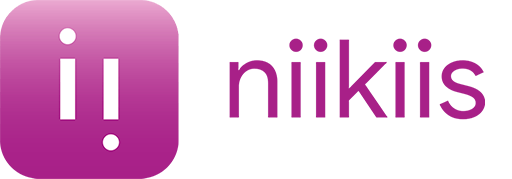What is the Agile methodology?
With increasing pressure to reduce costs, restore employee productivity, improve the employee experience and execute the right policies and practices for employee performance, every company's leadership team must rethink its overall strategy.
Workdays and the way people contact and interact with each other have changed dramatically, requiring HR managers and other key departments to strengthen and redefine their efforts as never before.
If you haven't used AGILE and don't know how it works, you may feel a little lost. In this article you will learn more about this new way of thinking and how it enables companies to improve every day through employee collaboration, adaptive testing and learning. Companies that adopt such an approach gain multiple benefits, such as improved attitude and productivity, higher quality of work performed, more control and customer satisfaction, and ultimately a higher return on investment.
Differences between traditional HR departments and those following the Agile methodology
The application of this methodology to HR departments is nothing new: it helps companies to update and stay aligned with the realities of the world of work. At the 2012 Annual HR Deloitte Conference, Josh Bersin stated that HR departments have a critical business role because of their impact on organisational flexibility. This is because they are able to adopt continuous learning mindsets, to acquire talent and be transparent, and ultimately to be pillars in attracting, developing and engaging employees.
Why is the Agile methodology the best choice for a human resources department?
Adopting this new working mindset allows leaders to bring more value and knowledge to all parties involved: from their employees and customer relations to optimising contacts and the quality of their teams' work.
Changes you need to make if you want to grow your business
This change in leadership heralds a profound paradigm shift that requires new behaviours and practices:
1. promoting enabling organisations where teams are small, cross-functional and accountable rather than organisations based on hierarchies, control and teams working separately.
2. Create experience-centred work (understanding and measuring the impact of work on employee wellbeing and customer satisfaction) rather than process-centred work (i.e. the tasks they have to perform).
3. Design simplified processes whereby losses are converted into efficiencies rather than following traditional complex processes.
4. Encourage collaborative environments based on continuous improvement rather than fostering functional silo mentality and resistance to change.
5. Bring to market products and services created by employees (through active listening, co-creation and innovation) rather than products and services designed by and for experts.
6. Adopt a gradual launch strategy that opens the door to new concepts for testing, learning and design iterations rather than pre-scheduled launches and one-off deliveries.

How to get the most out of Agile
Robotic process automation (RPA) continues to grow, with revenues not only doubling between 2016 and 2017 (from $271 million to $626 million), but is estimated to increase by a further $3 billion over the next year.
RPA is a process that uses software to replicate and perform tasks typically carried out by people, and is particularly beneficial in structured, repetitive and high-volume processes.
Among its main benefits, this methodology allows companies, their leaders and, consequently, HR departments to save time and money, avoid errors and improve accuracy and data quality as a scalable and integrated process. By effectively delegating repetitive tasks, HR staff gain time that can be spent on strategic activities, contacting and engaging employees, and meticulously tracking business processes.
What is the potential problem of implementing RPA?
While a large number of companies are implementing RPA to reduce costs, most seem to fail to scale it effectively. According to a recent study conducted by Accenture, only 13% of RPA projects are successfully scaled across all departments in a company, indicating that RPA scaling is best implemented when using an effective structured methodology.
Applying it to RPA can be a very efficient and much more realistic approach to operating business models, because:
1. It focuses on people and their interaction.
2. It requires almost no documentation.
3. It involves customers in projects and promotes collaboration.
4. Involves having to respond to constant change.
How to implement RPA correctly
Since automation can be structured in many different and efficient ways, before implementing automation, companies must carefully identify and assess which processes need to be automated, what are the best practices for implementing automation, and which people will require specific training to do so.
How niikiis can help you implement this methodology
Incorporating an RPA approach that follows the Agile methodology allows companies to ensure that the functions they perform deliver value and achieve results. In addition to digitising your organisation's business processes, niikiis will successfully implement Agile methodology values with the RPA tools needed to solve high-impact problems while minimising or eliminating the need for workers to perform operational tasks.
We hope this article has been of interest to you and inspires you to discover the path that will lead you to work differently. Contact us for full details or request a demo to find out how niikiis can help you empower your employee community to manage change well, help you improve adaptability and make your business stronger.


 Employee database
Employee database  Documents and e-signature
Documents and e-signature  Reporting and analytics
Reporting and analytics  Payroll and incidents
Payroll and incidents  Time and Attendance Software
Time and Attendance Software  Shifts and task list
Shifts and task list  Absences & time-off
Absences & time-off  Workflows
Workflows  Expense management
Expense management  Recruitment and selection software
Recruitment and selection software  Onboarding
Onboarding  Training and procedures
Training and procedures  Internal communication
Internal communication  Performance assessment software
Performance assessment software  HR surveys and forms
HR surveys and forms  Chatbot
Chatbot 